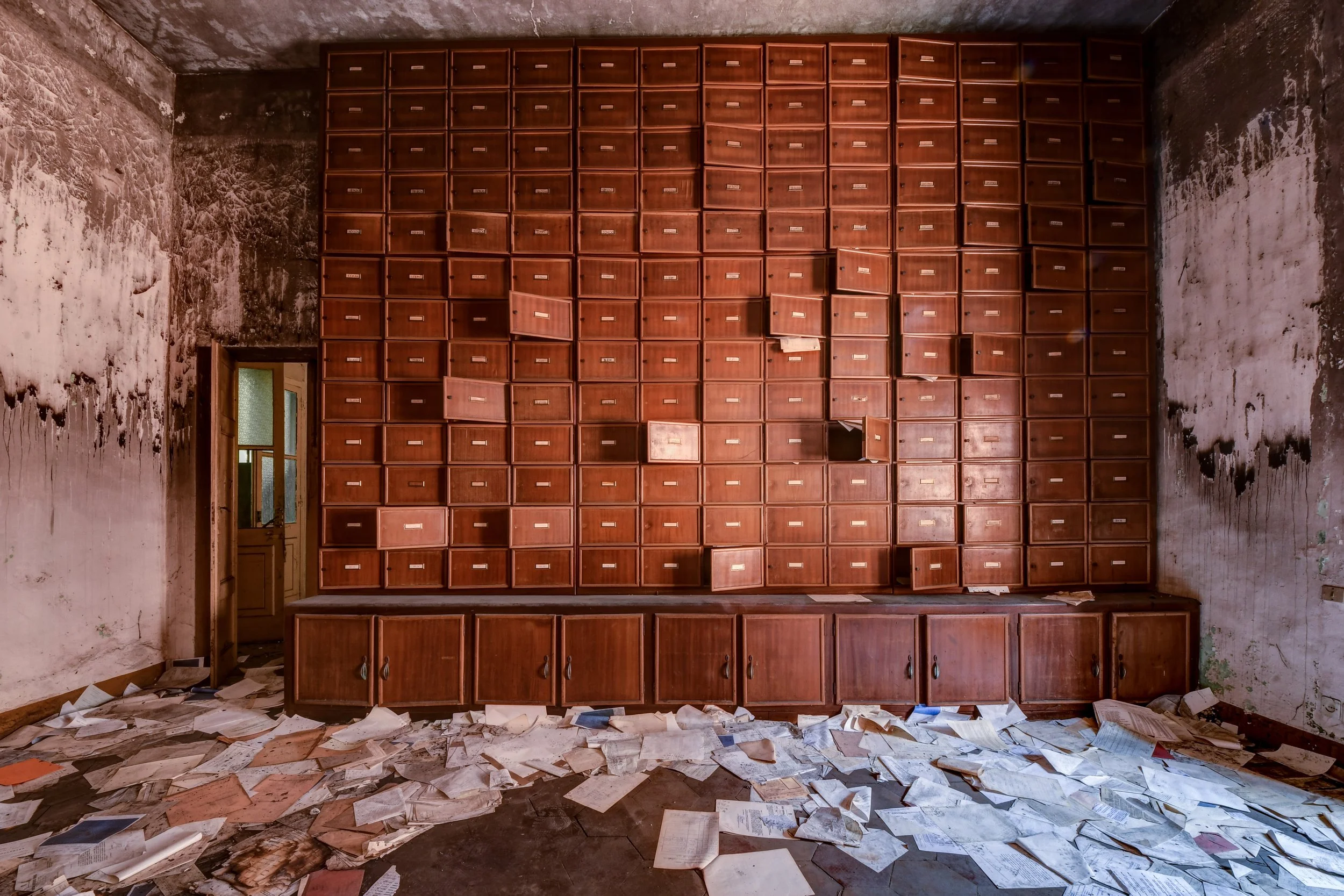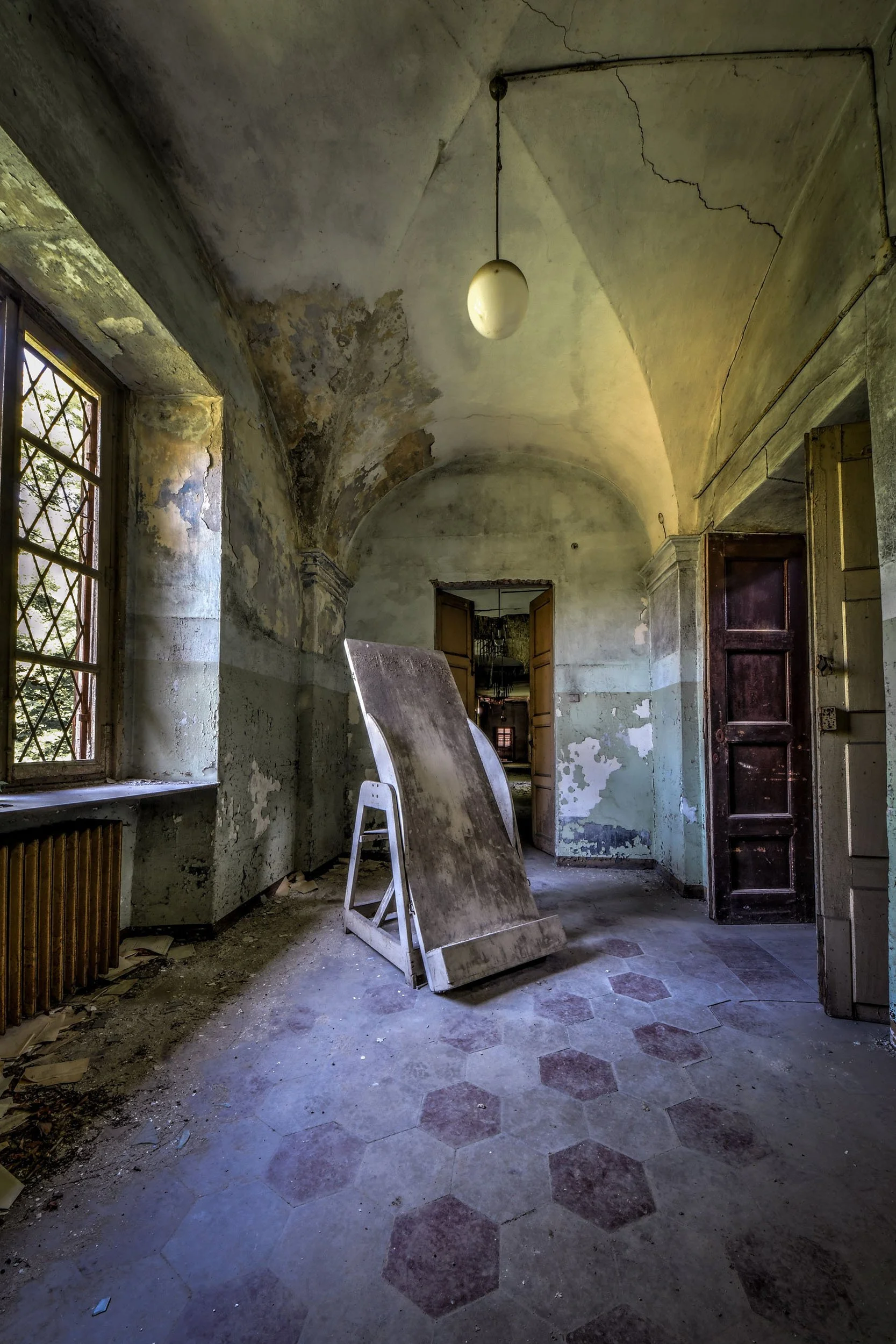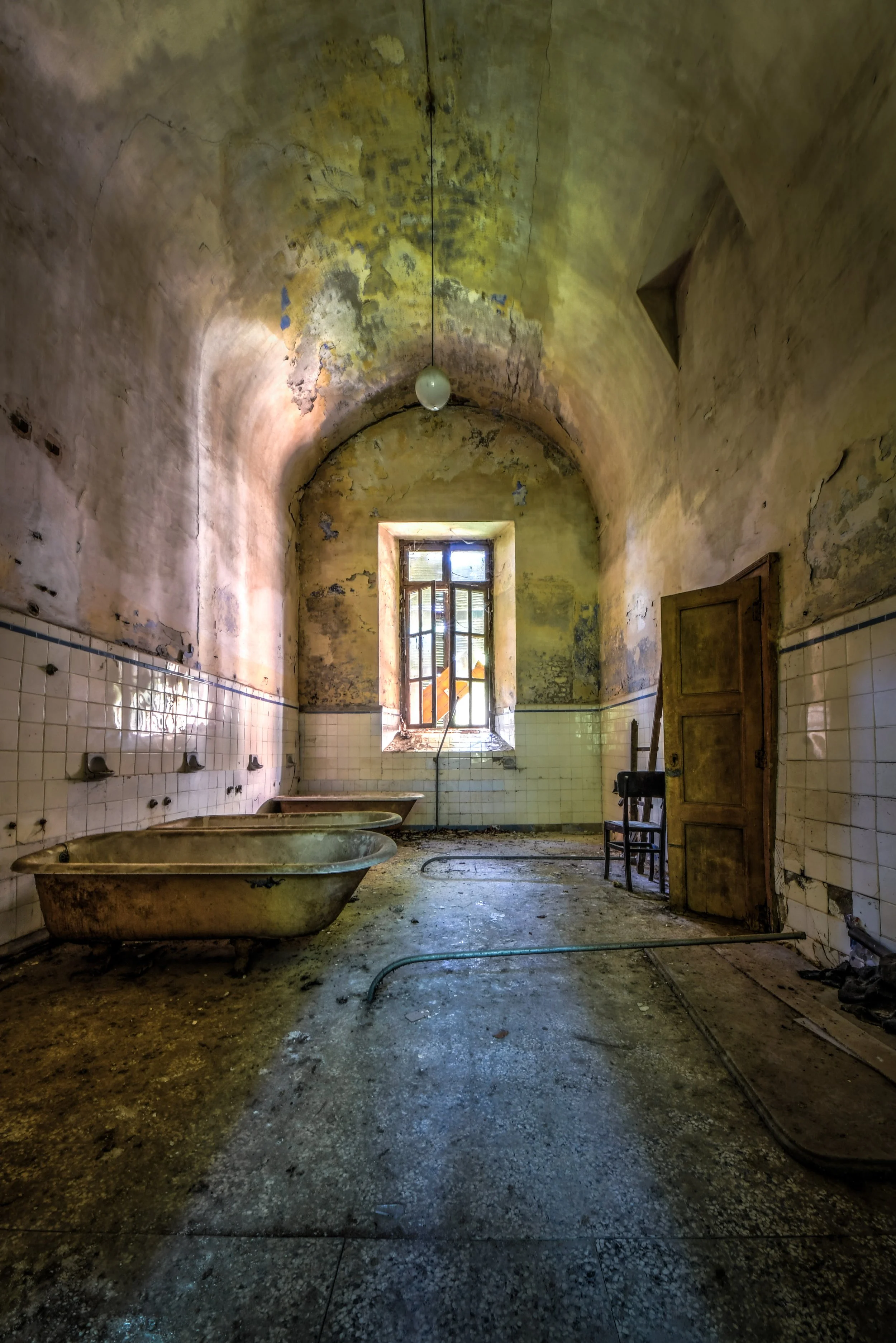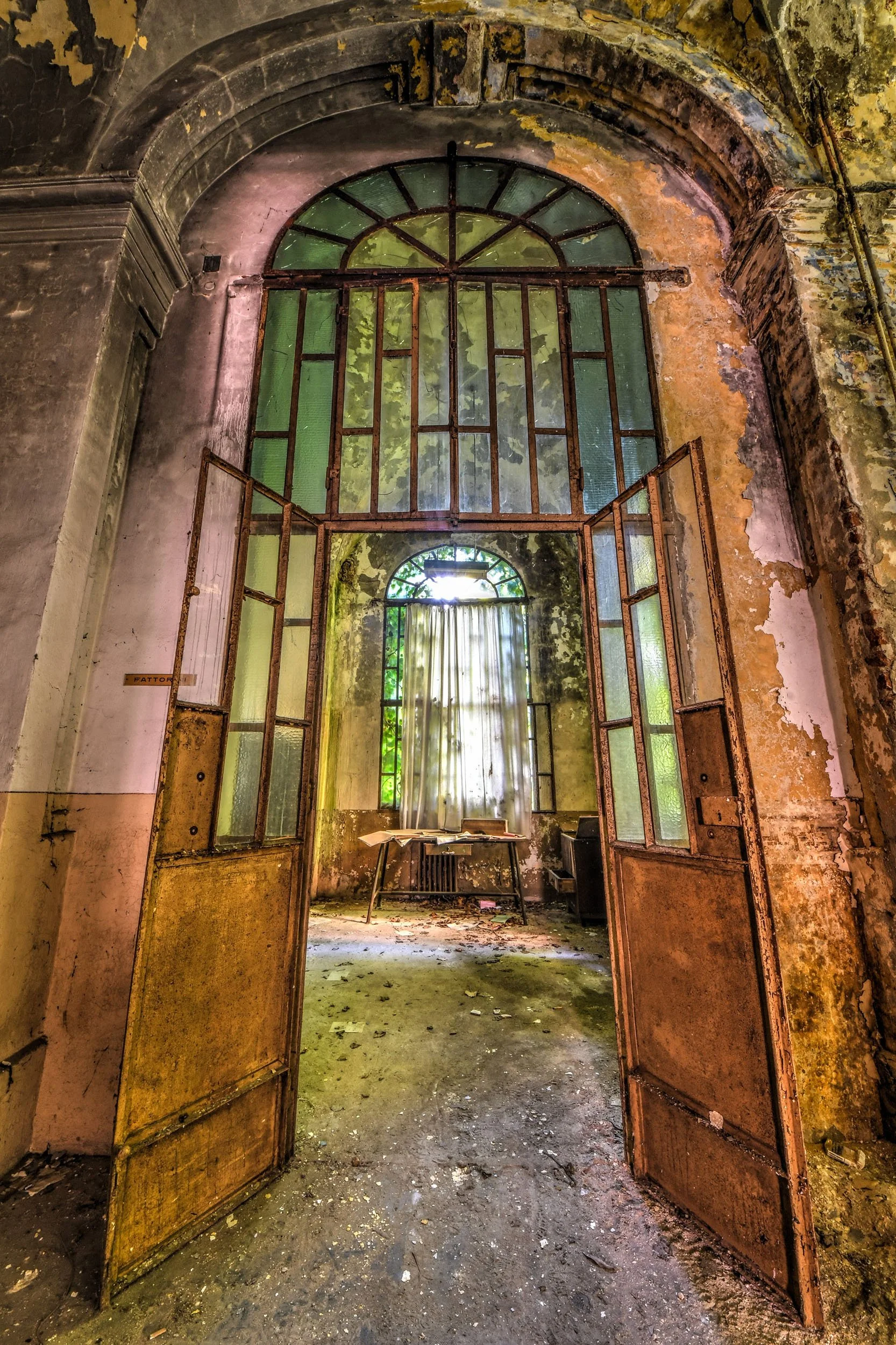Manicomio
Italian for “insane asylum,” manicomio is a poignant illustration the history of mental illness, how we’ve treated it, and how far medicine has come since this building was in its prime.
Mental illnesses were once largely misunderstood by doctors, scientists, and the larger public. The architecture of the time reflects that.
Today, most mental illnesses are treated with a mixture of medications, therapy, and a healthy regimen for practicing self-care. In the 19th and 20th centuries, treatments looked a little different.
Sweeping ceilings, gaping windows, and sunlit wards were built in direct response to the ailments of hospital patients.
Prior to the 20th century, patients with severe mental illness were subject to cruel and inhumane treatment. As the concept of “moral treatment” was introduced around the world in the early 1900s, the standards for mental illness treatment shifted.
“Moral treatment” denounced the use of harsh restraints and isolation typically wielded on severely mentally ill patients.
Instead, moral treatment practitioners built hospitals in quiet settings and provided opportunities for privacy and relaxation, work, and recreation. As a result, hospitals were often built around central core and were flanked by long wings that let in plenty of air and natural sunlight.













